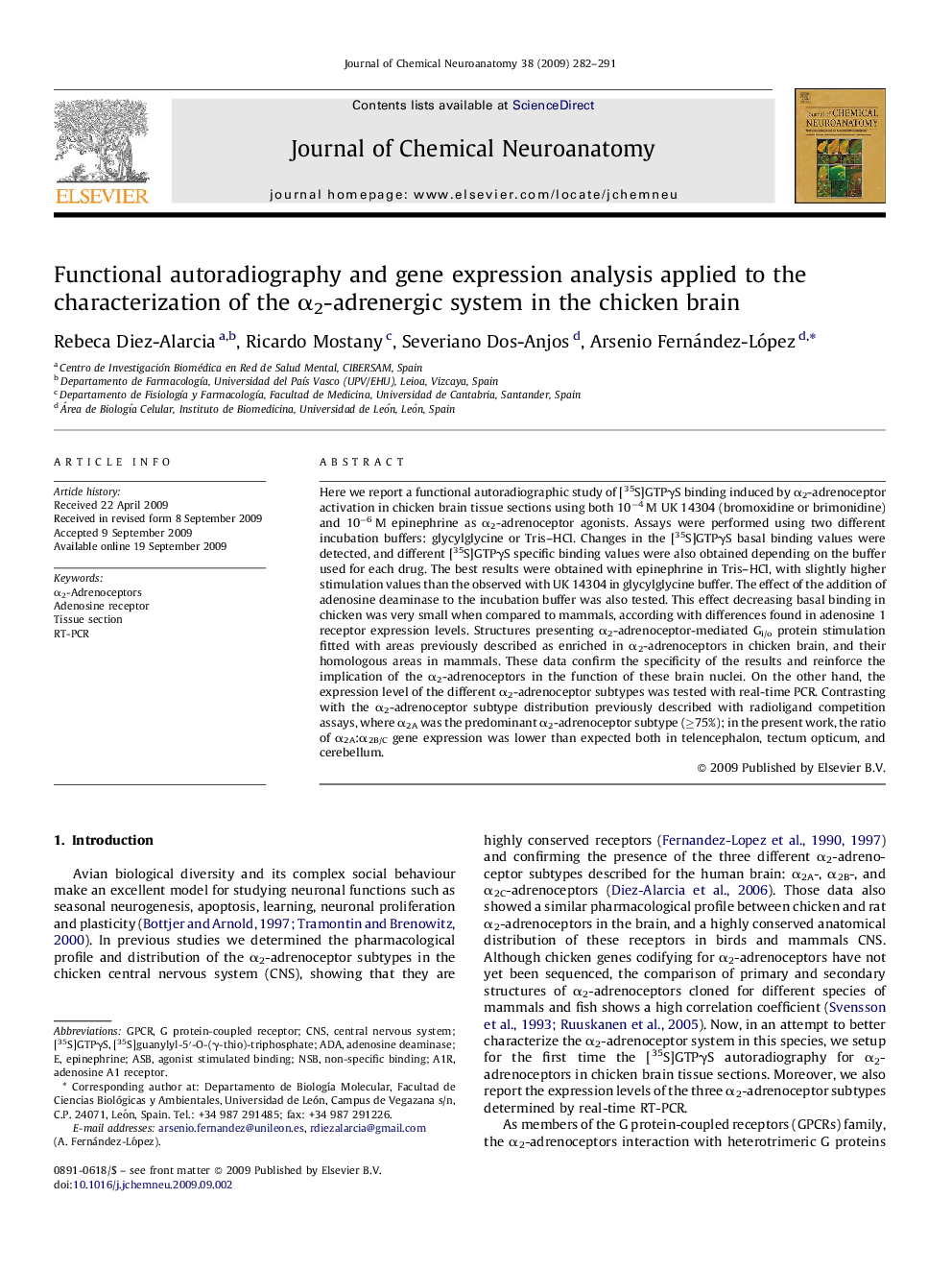| Article ID | Journal | Published Year | Pages | File Type |
|---|---|---|---|---|
| 1989231 | Journal of Chemical Neuroanatomy | 2009 | 10 Pages |
Here we report a functional autoradiographic study of [35S]GTPγS binding induced by α2-adrenoceptor activation in chicken brain tissue sections using both 10−4 M UK 14304 (bromoxidine or brimonidine) and 10−6 M epinephrine as α2-adrenoceptor agonists. Assays were performed using two different incubation buffers: glycylglycine or Tris–HCl. Changes in the [35S]GTPγS basal binding values were detected, and different [35S]GTPγS specific binding values were also obtained depending on the buffer used for each drug. The best results were obtained with epinephrine in Tris–HCl, with slightly higher stimulation values than the observed with UK 14304 in glycylglycine buffer. The effect of the addition of adenosine deaminase to the incubation buffer was also tested. This effect decreasing basal binding in chicken was very small when compared to mammals, according with differences found in adenosine 1 receptor expression levels. Structures presenting α2-adrenoceptor-mediated Gi/o protein stimulation fitted with areas previously described as enriched in α2-adrenoceptors in chicken brain, and their homologous areas in mammals. These data confirm the specificity of the results and reinforce the implication of the α2-adrenoceptors in the function of these brain nuclei. On the other hand, the expression level of the different α2-adrenoceptor subtypes was tested with real-time PCR. Contrasting with the α2-adrenoceptor subtype distribution previously described with radioligand competition assays, where α2A was the predominant α2-adrenoceptor subtype (≥75%); in the present work, the ratio of α2A:α2B/C gene expression was lower than expected both in telencephalon, tectum opticum, and cerebellum.
